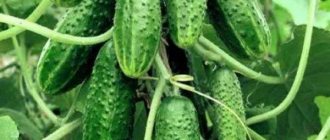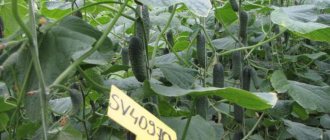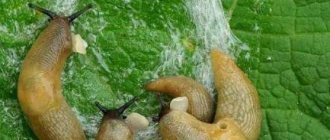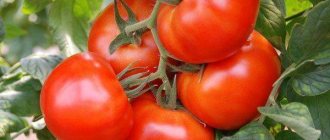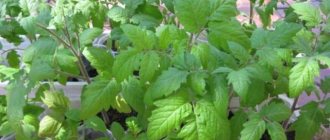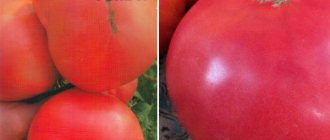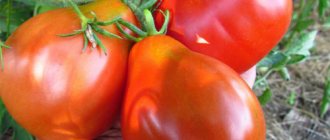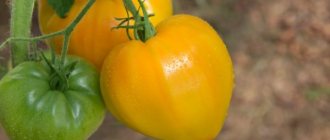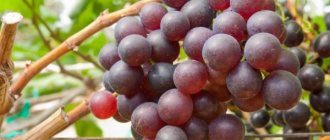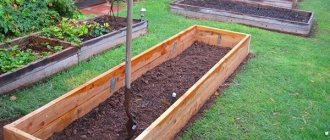Vegetable growing » Cucumbers
0
1850
Article rating
Kira Stoletova
Spino cucumber is a unique, self-pollinating plant species that has generative characteristics. It appeared relatively recently, but already has every chance of promising demand around the world.
Description of Spino cucumber
Description of the variety
Hybrid form "Spino f1" - super early ripening. Less than one and a half months pass from the period of emergence of seedlings to the harvesting stage. The hybrid is resistant to low light. The parthenocarpic hybrid form is recommended for cultivation under conditions of the first and second rotations when cultivated in protected soil.
The bushes are characterized by a generative type of development, have short internodes and medium-sized leaf blades, which allows the plant to form a significant volume of ovaries when using a low trellis structure.
The presence of a minimum number of side shoots in combination with the bouquet type of flowering and the formation of about five ovaries in the axils contribute to a very rapid growth of pickles. In addition, no yield failures were observed.
The fruits are uniform in size and have an average length of 12 to 14 cm. The surface of the fruit is coarsely tuberous. The color of the peel is dark green, without stripes or spots. The pulp has an excellent taste, without bitterness. The fruits can be used for sale. The harvest is excellent for preparing salads and processing, including pickling. When the fruit outgrows, the barrel-shaped shape is absent, and the leveled, cylindrical shape is retained.
Description of fruits
All cucumbers that ripen 35–40 days after the growing season grow 12–14 cm in length. Their skin is covered with large tubercles. Zelentsy have a beautiful shade, there are no stripes or spots on the surface. The fruits are characterized by:
- cylindrical shape;
- lack of bitterness;
- excellent sweetish taste.
When outgrown, cucumbers do not change color and retain their attractive appearance. Zelentsy is used not only in salads, they are pickled in jars during the winter, and it is impossible to refuse lightly salted cucumbers. Hybrid seeds are produced by Syngenta and sold in different countries. It is impossible to collect the grains on your own.
Advantages and disadvantages
The hybrid novelty “Spino f1” is characterized by the following advantages, thanks to which it can be classified as promising:
- high yield potential;
- concentrated fruit yield;
- high early plant productivity;
- increased overall yield from the sown area;
- high-end appearance;
- excellent taste;
- duration of storage of collected fruits;
- excellent transportability indicators;
- Irregular collection does not have a negative impact on the appearance of the fruit.
The hybrid form is characterized by high rates of resistance to such dangerous cucumber diseases as cucumber mosaic virus, pumpkin olive spot, powdery or southern mildew. Average resistance is observed to vascular yellowing of fruits. The generative type of development of the hybrid form requires control of the number of ovaries, and neglect of this requirement often causes them to fall off.
Diseases and pests
This hybrid variety of Spino cucumber has high resistance to many known diseases. Variations of spotting, mosaic or dew do not in any way affect the development of this plant. Sometimes you can only find a slight change in the color of the fruit to yellow. But to prevent this, it is necessary to use special chemicals.
Drugs such as Gamair, Thanos and Kurdan have the best effect on this variety of cucumbers. It is necessary to use special copper-containing preparations that will prevent insects and soil pests from appearing. Spraying is best done a few days before heavy watering. This will allow all substances to fully demonstrate protection. If this condition is not observed, then watering will completely wash away all signs of the presence of poison.
Sowing seeds
Early ripe cucumber “Spino f1” can be grown by direct sowing of seeds in soil heated to optimal temperatures, adhering to the following recommendations:
- the seed material sold by these companies has already undergone high-quality treatment with the highly effective fungicidal preparation “Tiram” and does not require heating or pre-soaking, which is very convenient for gardeners;
- the timing of direct sowing of seeds should be determined primarily by temperature indicators and soil moisture parameters in the ridges;
- seed material is sown on open ground ridges when the soil is heated to 15-18 °C;
- hybrid cucumbers react poorly to thickened sowing, and under such conditions the plants exhibit poor development of lateral fruiting vines;
- depending on the method of cultivation, furrows or planting holes for cucumbers should be filled with a mixture, which must include peat, rotted manure, sand and high-quality mineral fertilizers;
- holes or furrows filled with the nutrient mixture should be watered generously with water heated to 25 °C;
- when sowing dry seeds, the sowing depth should be 1.5-2.5 cm;
- cucumber crops must be mulched with a mixture based on peat or rotted manure, and then covered with film.
When cultivating hybrid early-ripening cucumbers in glass, film or polycarbonate greenhouses and tunnels, sowing seed material can be carried out already in the first ten days of May, adhering to the standard scheme.
Characteristics of the variety
- Hybrid Spino is a very early vegetable. The first collection of ripened fruits can be carried out 39 - 40 days after emergence;
- the period from flowering to harvest in the spring rotation is 15 - 20 days, in the summer-autumn this process is much faster;
even when formed on a low trellis, the plant, thanks to its short internodes, is capable of forming a large number of ovaries; Fruiting is stable, yield is concentrated. Marketable yield under film covers, according to the State Register, amounted to 16 kg per 1 square meter; parthenocarpy allows the cucumber to set fruit without the help of pollinating insects; the variety has excellent stress resistance, due to which it is preferred for very early and late planting; The open type of bush has a number of advantages, including unhindered penetration of light to all parts of the plant, reduced susceptibility to disease, and rapid recovery. The combination of these factors reduces the cost of caring for Spino; When creating the variety, scientists put into it a very useful property - high resistance to lack of light
This quality is important in regions with short daylight hours; The hybrid is characterized by high immunity. Resistance to cladosporiosis, cucumber mosaic virus, powdery mildew, as well as downy mildew and cucumber yellowing virus is noted; It is advisable to harvest the crop every day, but it is worth noting that the fruits do not outgrow, thanks to the peculiarity of first growing in length and only then in width;
- Some inconvenience in caring for the variety is created by the need to normalize the ovary when it is excessively formed. In this way, it is possible to avoid possible falling of the developing fruits;
- transportability is excellent, cucumbers can be stored for up to 10 days in the refrigerator without loss of commercial quality;
- The way to use greens is universal. Cucumbers are good in salads. Spino shows excellent pickling qualities and is suitable for canning.
Seedling planting method
Planting seeds of hybrid cucumbers "Spino f1" for seedlings is not difficult even for inexperienced gardeners and is carried out in compliance with the following agrotechnical practices:
- The best soil substrate for sowing seeds in seedling pots is light soil, the base of which is high-moor peat. Such a composition must be produced and filled with complex fertilizers;
- two days before sowing, it is recommended to disinfect the soil from root rot pathogens using tableted gliocladin;
- immediately before sowing, moisture-recharging watering of the soil in seedling containers is carried out;
- the recess for the seeds is made at the rate of 1.5 or 2 cm, followed by planting the seeds and sprinkling them on top with a nutritious soil mixture;
- in order to protect the top layer of soil from the formation of a soil crust that does not allow air and moisture to pass through, it is advisable to cover the crops with film or plexiglass for the first time,
- when sowing in groups in a common planting container, it is recommended to pick seedlings after the appearance of the first true leaf;
- high-quality seedlings have a non-elongated subcotyledon, the height of which does not exceed five centimeters, and have large, equally developed cotyledons;
- when diving, seedlings should be buried down to the cotyledon leaves, which will allow the formation of a more powerful root system and improve plant nutrition;
- To protect seedlings from premature stretching and overgrowth, stable soil moisture should be maintained, and the soil temperature should be maintained at 22 °C.
The optimal temperature regime at the stage from sowing seeds to emergence is 26 °C. After emergence of seedlings, the air temperature should be reduced to 22 °C during the day and no more than 18 °C at night. From mid-May, it is already possible to plant 20-25-day-old hardened seedlings, which by this time should have 3-5 true leaves. The optimal planting density when cultivating the Spino f1 hybrid should be about 2.3-2.5 plants per square meter.
Agricultural technology
The hybrid, created specifically for cultivation in protected soil conditions, has some nuances of agricultural technology. First of all, they relate to the timing of planting. To be able to harvest at the end of February - beginning of March, you need to sow the seeds in the middle or end of January, depending on the conditions of the region. The optimal planting density is 2.5 plants per 1 square meter. The bushes are tied to a trellis. Blinding the bottom 6 leaves will allow the crop to grow a powerful root system. To increase productivity, you can grow additional shoots up to 2 or 3 leaves long. Caring for the variety is carried out according to standard rules
Particular attention is paid to fertilizing - root and foliar
Spino quickly gained popularity as a greenhouse crop. Easy to care for, shade-tolerant and healthy, the cucumber will bring an early and abundant harvest, which is why the hybrid is so popular among farmers who grow vegetables for sale. Housewives have their own selection criteria - excellent taste and excellent pickling qualities. Perhaps the only disadvantage of the variety, apart from the need to ration the ovary, is the need to purchase seeds annually.
Rules of care
There is a special agricultural technology for cucumbers in open and protected soils, the observance of which contributes to obtaining high and high-quality yields. Cucumber "Spino f1" can be cultivated both in open ground and in greenhouses or hotbeds.
The main measures for caring for cucumbers include periodic heavy watering, applying fertilizers, the amount and composition of which should correspond to the growing phase of the plant, loosening the soil and hilling the bushes, as well as tying the cucumbers to low trellises. To improve the yield on each bush, the number of cucumber ovaries should be rationed and no more than 20 fruits should be left.
To protect cucumbers from diseases and pests, you can use both contact and systemic chemicals. The most effective products are “Binoram”, “Gamair”, “Fitosporin-M”, water-dispersible granules “Tanos”, wettable powders “Ordan” and “Kurzat”, as well as an aqueous suspension “Abiga-Pik” or copper oxychloride.
Landing rules
The variety is best grown in seedlings
Seeds do not require preparation for planting. That is, the gardener does not have to germinate the seeds, treat them with chemicals or heat them.
Landing is carried out in accordance with weather conditions
It is important to pay attention to the quality of soil heating. Its temperature should be at least 20°C. Seeds must be planted in separate containers and at a distance of 20 cm from each other.
If you plant them closer, the yield will drop significantly. The depth of penetration of seeds into the hole is 2 cm. After planting, the hole must be watered with warm water. It is also necessary to mulch the planting material with peat or manure waste
Seeds must be planted in separate containers and at a distance of 20 cm from each other. If you plant them closer, the yield will drop significantly. The depth of penetration of seeds into the hole is 2 cm. After planting, the hole must be watered with warm water. It is also necessary to mulch the planting material with peat or manure waste.
Soil for planting seedlings should only be used that has a surface layer of peat. After this, you need to put a small amount of limestone or complex fertilizers on top of the soil. A few days before planting, the soil should be treated with special substances that will prevent the root system from rotting. The seedlings are planted in the soil to a depth of about 2 cm. In order to prevent a film from appearing on the plant, which will block the flow of moisture and air, it is necessary to cover the planted material with a film. It is best to use seedlings that already have several formed leaves. There should be no more than 2 plants per 1 m2. This will prevent them from twisting among themselves.
The whole principle of care is regular watering and feeding. Fertilizers are used depending on the age and in the growing season. The amount of fertilizer applied depends on this. An excess or insufficient amount can provoke improper formation of the bush, and subsequently the fruit.
In order for the yield to increase, it is recommended to control the number of ovaries on the plant. Their number should not exceed 20 pieces. Do not forget about regular loosening of the soil
During loosening, it is important to remove all weeds and other foreign objects from the garden bed. Watering is carried out only in the evening
This allows moisture to stay longer and penetrate the root system as efficiently as possible.
Description of the early ripe cucumber variety Vyaznikovsky 37 and cultivation techniques
The Vyaznikovsky cucumber has been deservedly popular among Russian gardeners for more than 100 years. Bred in the city of Vyazniki for the conditions of the center of Russia (Moscow, Vladimir, etc.), the variety gradually spread throughout its entire territory. Currently, cucumbers are included in the State Register of Seeds of Russia under the name Vyaznikovsky 37.
General description of the plant
The description of the variety Vyaznikovsky 37 classifies it as an early ripening variety. The harvest can begin to be harvested already 35-40 days after emergence. During the period of active fruiting, up to 3 kg of fruit can be collected from 1 m² in 1 day. The bushes are resistant to cold snaps in mid-summer and temperature changes. Cucumbers can be grown in the southern regions (Krasnodar Territory) and in the difficult conditions of the Urals and Siberia.
Vyaznikovsky cucumbers are suitable for open and closed ground. When planting in a greenhouse, you need to take into account that the variety is bee-pollinated, so you should leave the door open so that insects can get inside. The characteristics given by gardeners note that Vyaznikovskie bear fruit best when cultivated in open ground or film greenhouses.
Vyaznikovskie 37 cucumbers are resistant to fungal diseases (powdery mildew, etc.). When temperatures change in mid-summer, they do not taste bitter. They are resistant to slight drying out of the soil, but in severe drought they require daily watering.
The vines are short, up to 2 m. When grown on a trellis, formation is required: 3-4 flowers with ovaries are left on each side shoot, and then pinched. Without a garter, the lashes lead into 3-4 sleeves, receiving several shoots from 1 root.
The leaves are medium-sized, with a non-wrinkled blade. To prevent disease, it is recommended to remove old leaves that are beginning to turn yellow.
Characteristics of the fruits of the Vyaznikovsky 37 variety
Cucumbers are cylindrical, elongated, without ribbing. The average length of a fruit suitable for harvesting is 10 cm, weight reaches 130-150 g. Seed specimens can reach 14-15 cm.
The skin is not rough, in technical ripeness it is intensely green in color, with a light tip and narrow pale stripes that disappear at about 1/3 of the fruit. A young cucumber is covered with slightly convex but numerous tubercles with dark, blunt spines. As the ovary grows, the pimples become less noticeable. Fruits at technical ripeness tolerate transportation well and do not lose their presentation within 2-4 days.
The cucumber pulp is dense, crispy, the seed chamber at technical ripeness occupies about 0.5 of the thickness of the fruit, and includes many small seeds. In slightly overgrown cucumbers, the seeds become more noticeable, but do not yet acquire a rough shell, so such fruits are quite suitable for consumption.
A variety for universal use. Early harvest allows you to use cucumbers for salads and snacks, any type of fresh consumption. Small fruits are collected during mass fruiting for canning. Slightly overgrown cucumbers of this variety can be pickled and salted in cut form or prepared into pickles, removing the seeds and rough skin.
Agricultural technology varieties
For growing in a greenhouse or open ground, you can use both the seedling method and sowing on a ridge. The first method allows you to get an even earlier harvest, and with the help of the second it is possible to shift mass fruiting to later dates, when tomatoes and other vegetables begin to ripen for assorted preparation. On a summer cottage it is convenient to combine both methods.
To grow seedlings, prepare peat pots with loose soil. Fill 2/3 of the volume with soil. Before sowing, it is better to soak the seeds for 30-40 minutes in warm water with potassium permanganate, and then place them in a damp cloth and germinate in a warm place (+30°C).
The seeds that hatch the very next day can be sown by planting them to a depth of about 1 cm in moist soil. Seeds that do not germinate can germinate in the next 2-3 days, so you should not throw them away. The fabric must be kept damp.
Grow the seedlings within 2-3 weeks. During this time, you will have to add soil to the pots to the level of the cotyledons. When the bushes have 3-5 leaves, they can be planted in a greenhouse. If the bushes are not tied to a trellis, pinch the top of the bush: this will allow you to get 3-4 side shoots, on which more female flowers are formed.
Description of Spino cucumbers
The plant belongs to indeterminate varieties and has generative development. A variety of open type, medium branching and height. The main stem of Spino with short internodes forms many ovaries (up to seven pieces). There are few side shoots. Cucumber leaves are medium-sized, slightly wrinkled, light green in color. The stalk is long. Judging by the description, two female flowers are formed on 3-5 ovaries in the leaf nodes of Spino. The cucumber itself is short, coarsely tuberculate, smooth, and cylindrical in shape. The color of the fruit is solid, dark green, there are large spines on the surface, the pubescence is light. Almost all cucumbers are the same size, 10-12 cm long, weighing up to 100 g. The taste of Spino is pleasant, slightly sweet, the flesh is crisp, juicy, dense, without bitterness.
Spino cucumber is suitable for salads and does not lose its taste when canned.
Growing, care and agricultural technology
Watering, weeding and loosening the soil
You need to water a little every day or in slightly larger quantities every 3-4 days (4-5 liters per 1 sq.m. before the fruit appears, 10 liters during the fruiting period). Drip irrigation is also effective. The water should be heated to soil temperature.
Hilling up bushes
The bushes are periodically earthed up so that the root system develops better and it is easier for the plant to retain moisture. To improve oxygen access, they also loosen the soil or pierce the crust on its surface with a pitchfork in several places.
Preventative treatment
To protect against pests, it is useful to spray the bushes from time to time with solutions of biological insecticides - Gamaira, Thanos, Benorad, Ordan. The solution is prepared according to the instructions.
Top dressing
Before transplanting seedlings, you can add Terraflex Universal fertilizer to the soil. Then the cucumbers are fed three times a season with small doses of organic and mineral fertilizers. For young bushes, nitrogen fertilizers are suitable - manure from cows, sheep, horses or bird droppings diluted with water. In the future, mineral fertilizers are used that can replenish the plants’ need for potassium and phosphorus.
Landing
Seeds for seedlings need to be planted 20-30 days before transplanting them to the garden bed. In the usual spring-summer cycle this is the end of March - mid-April. No processing or dressing is required before sowing, especially if the seeds were sold in a colored shell.
Peat pots are prepared for seedlings so as not to injure the roots. The substrate is mixed from a large amount of humus and slightly smaller proportions of soil from the garden, peat and sand. They spill it with a solution of potassium permanganate for disinfection and plant the seeds to a depth of 1.5-2 cm. Having moistened the soil, move the containers to a warm room, and with the appearance of sprouts, make it cooler - up to +18-20 degrees.
Before transplanting seedlings, prepare the soil. In the greenhouse, the top layer is changed and the soil and all surfaces are disinfected. In open ground, in the fall, organic fertilizers or ammonium nitrate are applied and dug up.
For 1 sq. m place 2.5 bushes.
